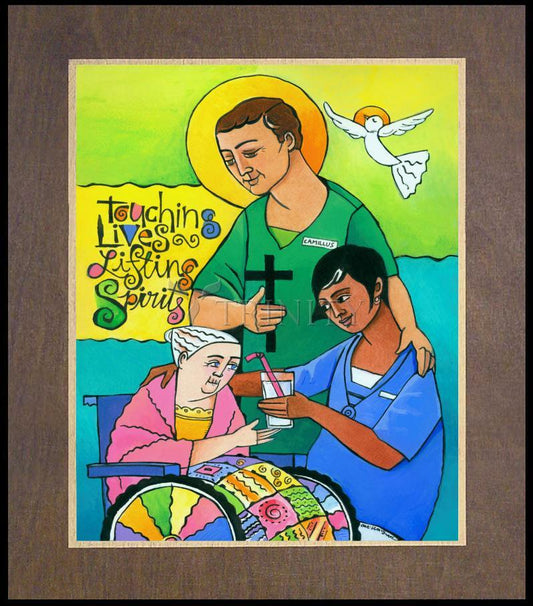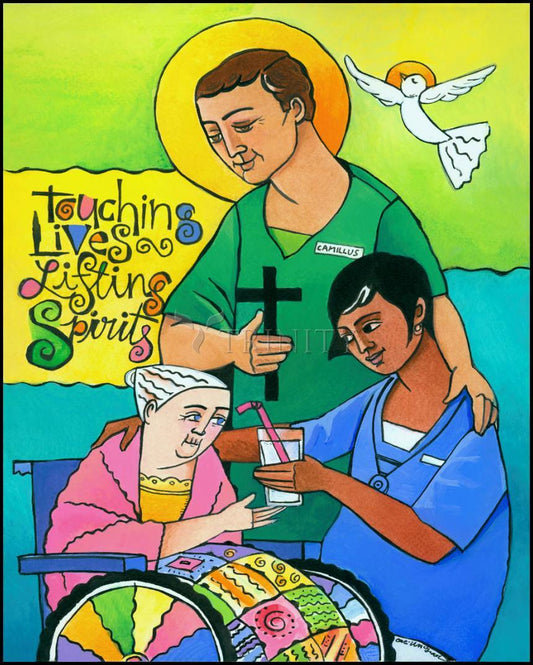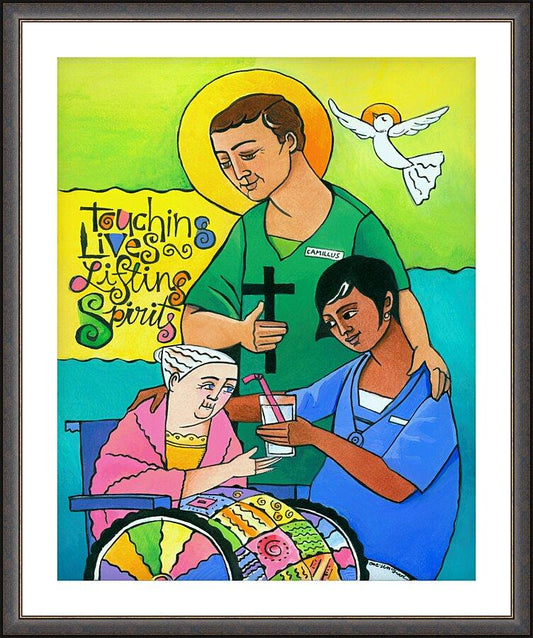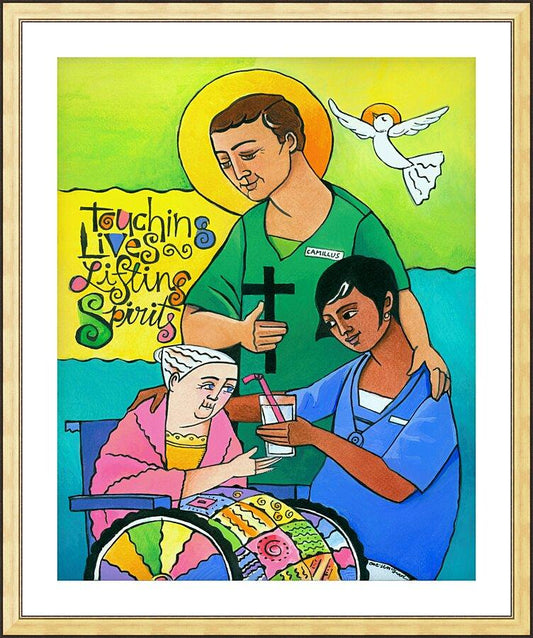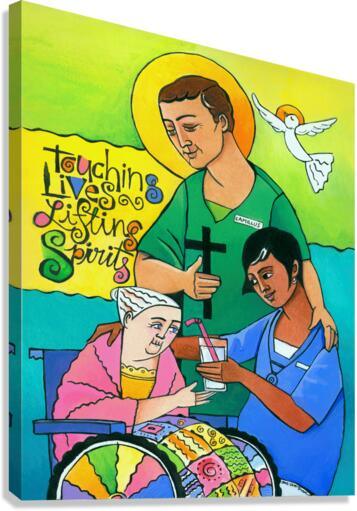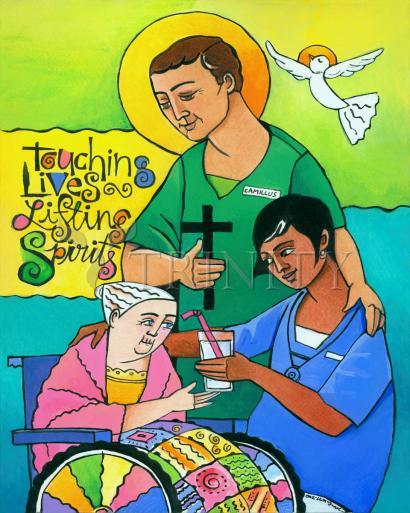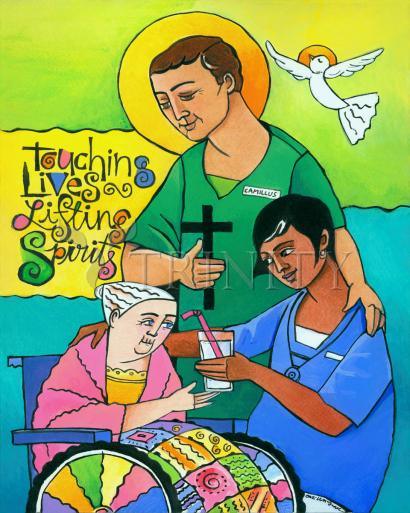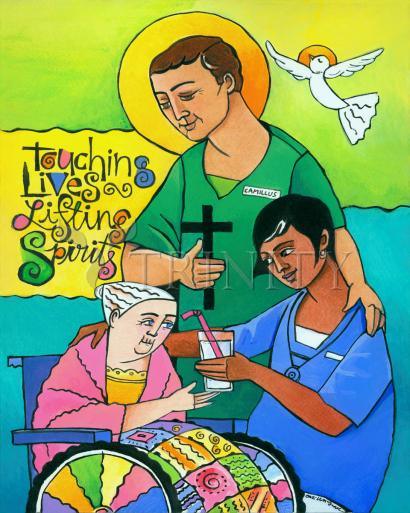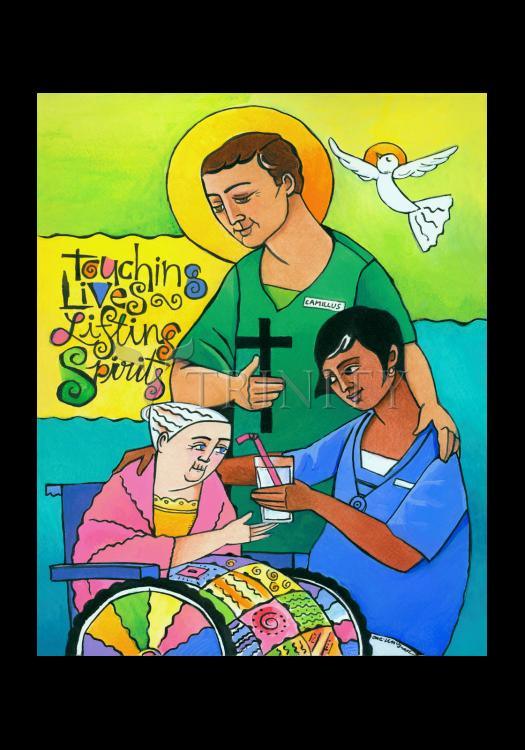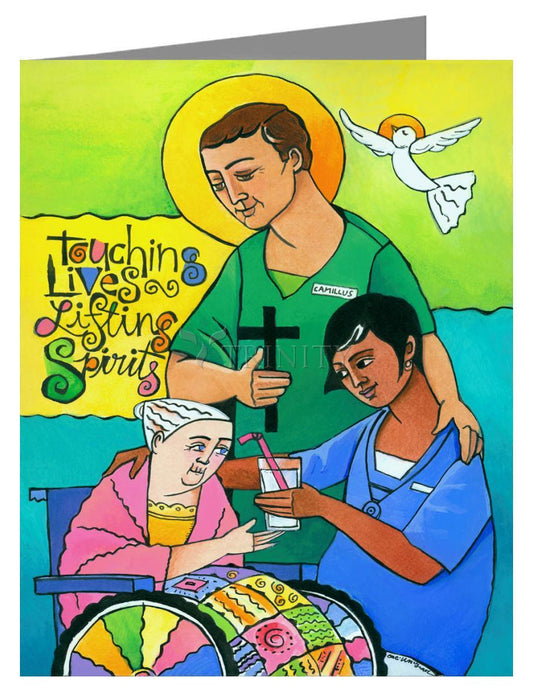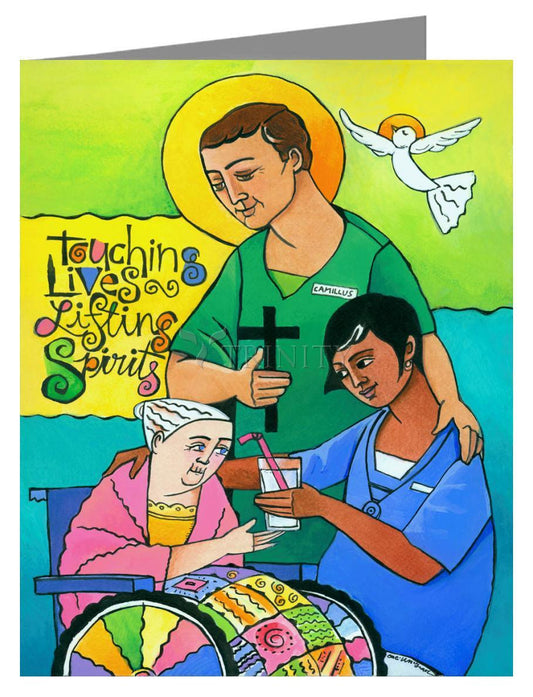St. Camillus de Lellis
Founder of the Ministers of the Sick (1550-1614)
"To Christ, God and Man, sick in the person of the Poor " homage of love."
The mother of St. Camillus was sixty at the time of his birth. Since his conception was nothing short of a miracle, she felt it was fit that his delivery should be similarly blessed. Thus, when she went into labor during Mass, she hurried to a stable so her son, like his Savior, could be born on a bed of straw. Such a child, she believed, was destined to be a saint. With such an auspicious beginning, it is sometimes ironic to encounter the future saint some twenty years hence, a towering man (six-foot-six), a soldier of fortune, with an irascible temper, a penchant for brawling, and a serious addiction to gambling. Camillus seems to have inherited these qualities from his father, an old soldier, considerably less pious than his wife. Together, father and son went off to fight the Turks with the Venetian army. In the course of these adventures, Camillus developed a hideous and painful sore on his leg, which would afflict him for the rest of his life. He was sent to the hospital of San Giocamo in Rome, where he worked as a servant while also undergoing treatment. His nursing talents were appreciated, but his temper was so intolerable that he was dismissed to return to the army.
Soon his physical suffering was compounded by the consequences of his own temperament. His gambling resulted in his losing everything, including the proverbial shirt off his back. In desperation, he took a job as a builder for a Capuchin community. There his exposure to the friars awakened a dormant thirst for a God and he vowed to amend his life. He sought to enter a religious community, but his ailment proved an impediment. (Sound health was required for entrants to religious orders.) Instead, he returned to San Giacamo and devoted himself, in a spirit of religious discipline, to the care of the sick and the dying.
Charity was not a virtue commonly associated with the hospitals at the time, and healing was virtually rare. Conditions in San Giacamo, as in most other hospitals, were appalling. Aside from the filth, the care provided by indifferent and even sadistic staff members " often recruited from the criminal class " was often more insidious than any illness. In this environment, Camillus was determined to infuse an atmosphere of love. In the spirit of his newfound faith he sought to treat each sick and dying person as another Christ, a living sacrament. Before long his loving ministrations, combined with his appreciation for the value of good nutrition, cleanliness, and fresh air, produced results that appeared miraculous. The administrators of the hospital elevated him to the position of superintendent.
By that time, however, Camillus had conceived the idea of an association of similarly minded nurses, for whom care of the sick and dying would be a religious discipline. His confessor, * St. Philip Neri, encouraged him to proceed with this project. He also suggested that Camillus might be able to add the comforts of the sacraments to his nursing care should he become a priest. Camillus therefore dutifully applied himself to the study of Latin and theology and received holy orders in 1584.
Soon after this, he left San Giacamo with two other companions to establish a model hospital in Rome. In 1591 Pope Gregory XIV recognized Camillus and his Ministers of the Sick, allowing them to wear a religious habit adorned with a large red cross. The community grew and its members proved their mettle by volunteering for service amid outbreaks of plague. Camillus was not content to wait for the sick to come to him. He used to scour the caves and catacombs of the city to seek out any who suffered. Given the conditions under which they worked, it is no surprise that many of the ministers became sick and died.
Camillus personally founded fifteen houses of his order and eight hospitals. He himself remained in more or less unbearable pain, though, to the end, he insisted on providing personal care at the bedside of the most miserable cases. He eventually died in Genoa on July 14, 1614, at the age of sixty-four. He was canonized in 1746. Having known what it meant both to suffer and to provide succor, he was later declared the patron both of the sick and of nurses.
Born: 25 May 1550 at Bocchiavico, Abruzzi, kingdom of Naples, Italy
Died: July 14, 1614 at Genoa, Italy of natural causes
Beatified: April 7, 1742 by Pope Benedict XIV
Canonized: June 29, 1746 by Pope Benedict XIV



